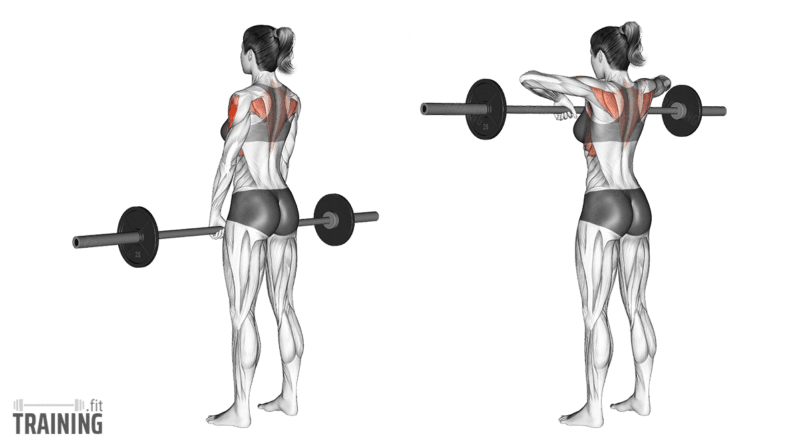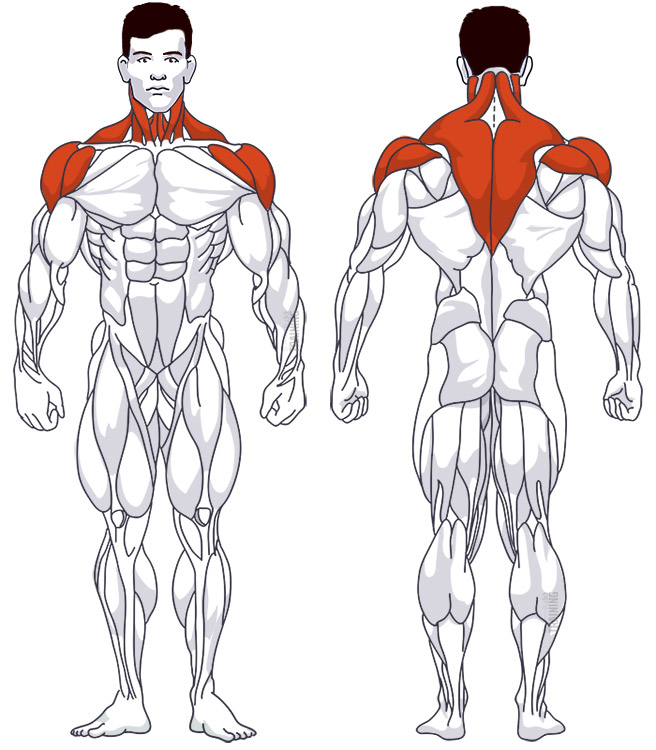Upright Barbell Row
Compound exercise, Free weightsOverview

Main muscles
- Neck: Trapezius muscle
(Musculus trapezius) - Shoulder: Medial deltoid muscle
(Musculus deltoideus, Pars acromialis)
Training plans
Here you can find example plans for upright barbell row training:
Upright Barbell Row: Basics and alternatives

Involved main muscle groups:
Upright Barbell Row
The upright barbell row is a popular standard exercise for working the neck (trapezius muscle). Although typically done with a barbell, you can also use an EZ bar. While standing, you’ll pull the weight up to under your chin in an upright position.
You can also try upright rows with dumbbells or with resistance bands as alternatives. These variations are gentler on the wrists but require more stabilization and deliberate arm control.
This exercise not only strengthens your neck but also your shoulders, particularly the middle part. Unlike shrugs, it’s not a neck isolation exercise but a compound one. You can compare it in some aspects to the incline dumbbell row.
Correct execution
Upright barbell rowing may seem simple, but it takes some practice. The movement isn’t too complicated, but proper execution needs to be learned and done consciously.
Your grip width affects how much force is applied to the neck or shoulders. A tighter grip works the neck harder, while a wider grip engages the shoulders more.
Video tutorial
Step-by-step instructions
Stand with your feet hip-width apart.
Grasp the barbell bar, also hip-width apart, using an overhand grip.
Keep your back straight, head facing forward, and chest out.
Pull the barbell up evenly, close to your body.
Lift the barbell under your chin, keeping your elbows higher than your wrists.
At the end of the movement, lower the barbell in a controlled manner and start a new repetition without swinging.
Common mistakes
During the upright row, the upward movement should be uniformly controlled. Avoid swinging the weight from one rep to the next, as this not only disrupts the movement but also diminishes the training effect.